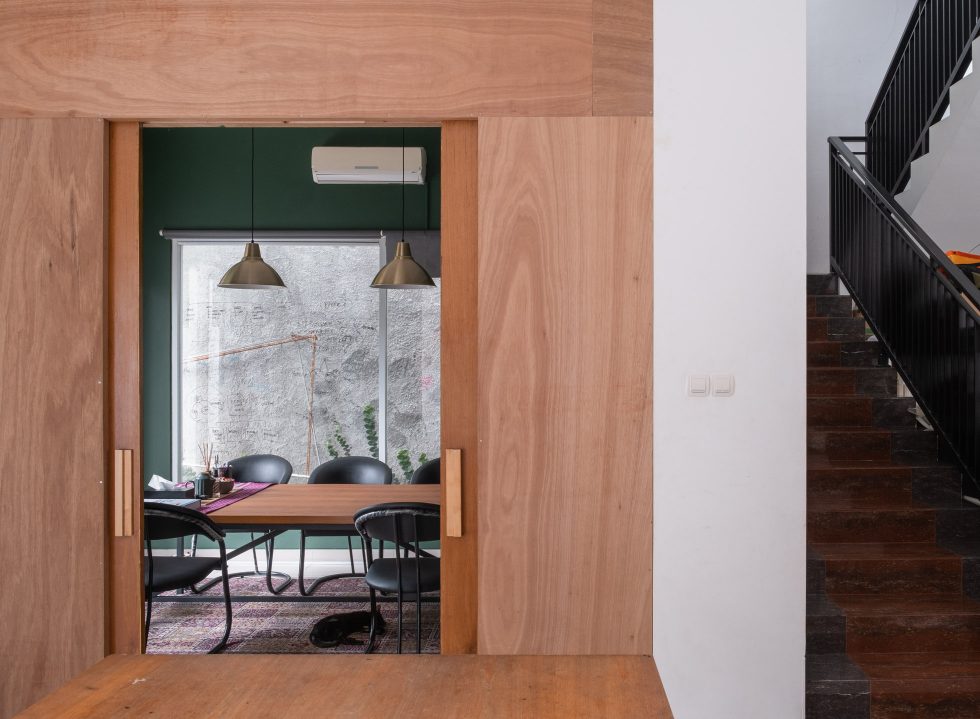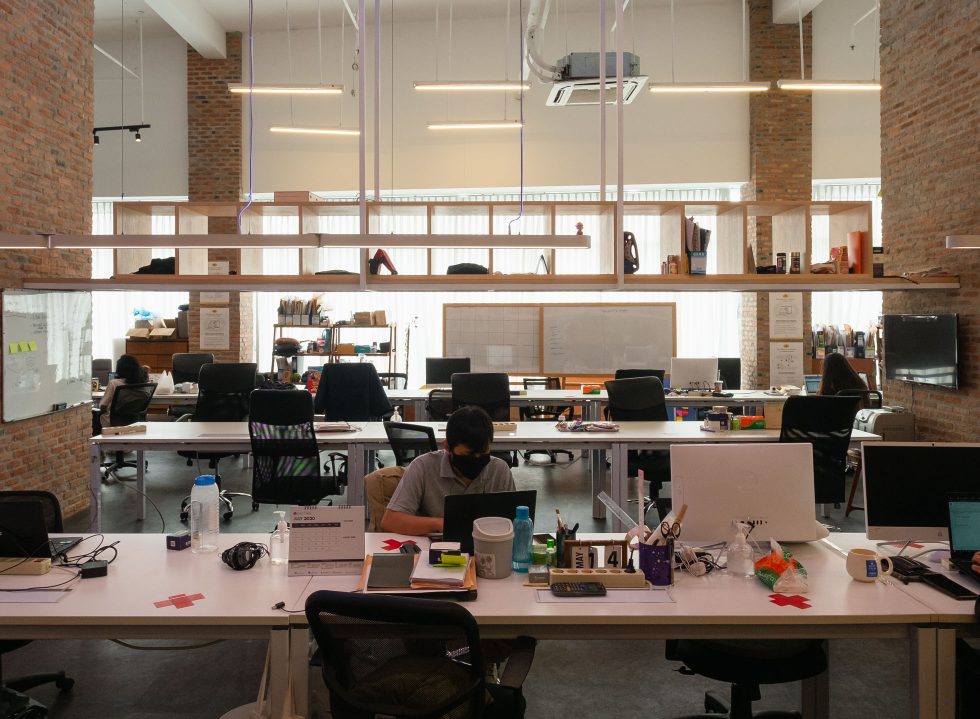Back in March, half of the city’s offices shut their doors in lieu of the government’s stay-at-home mandate; some adjusted happily, some less so.
While working-from-home has never been a foreign concept, it was also never deemed conventional. A normal work day used to take place within buildings, where restless meetings, office banters and going dutch on food deliveries became the social fabric of workplace culture. One of the pandemic’s major impacts is the fading of these day-to-day interactions.
When the PSBB (large-scale social restrictions) policy was lifted in June, offices like the graphic design firm, LeBoYe, reopened with limited occupancy and safety measures in place. Others remained cautious by either implementing the shift system, like interior design company Fabelio, creative houses 6616 and Maika Collective Studio along with architecture firm andramatin Studio or prolonging working-from-home, like design studio Thinking*Room.
There, scenes of office life looked quite jarring in comparison. The usually packed rooms turned still with employees limited in small numbers and distanced at arm’s length, while talks and banters amongst colleagues were muffled with the compulsory use of masks. Those working remotely still had to linger in front of their laptop screens where meetings and discussions relocated, leaving their physical offices bare and uninhabited.
The saving grace is that productivity increased and professionalism stayed unflinching. If anything, “this situation has made us realise that many tasks can be managed remotely,” noted Hermawan Tanzil of LeBoYe, despite also believing that office attendance is just as important. Yet with a change of this magnitude at the helm, there’s always something gained and lost, even for offices who have always fronted flexible working situations.
For Eric Widjaja of Thinking*Room, chemistry and energy happen when people meet, so the gap in the working dynamic is naturally felt. The same goes for Andra Matin of andramatin Studio who finds it easier to kick off ideas when the team is together in the same space, while Satriya Gurnitha of Maika Collective Studio finds virtual meetings less complete compared to face-to-face interactions.
As for Marshall Utoyo of Fabelio, lack of physical interactions means less social bonds with colleagues, a similar sentiment shared by Teddy Koentjoro of 6616 who considers office as a safe space, especially for those whose home environments are unpredictable to control.
It’s in these absences that physical workspace seemed indispensable and valuable. As we ponder, these photographs visualised what used to be people’s 9-to-5 routines before the pandemic pulled the brakes. Now overshadowed by regulations, one is left wondering of what tomorrow’s workplace is going to look like. To start, what will this shift mean for the office landscape across industries?
Sooner or later, these questions will confront both companies and employees. Business structures may see a reform, while company cultures will be further put to test – and maybe for the better. But for now, there’s no easy way out but to adapt.































